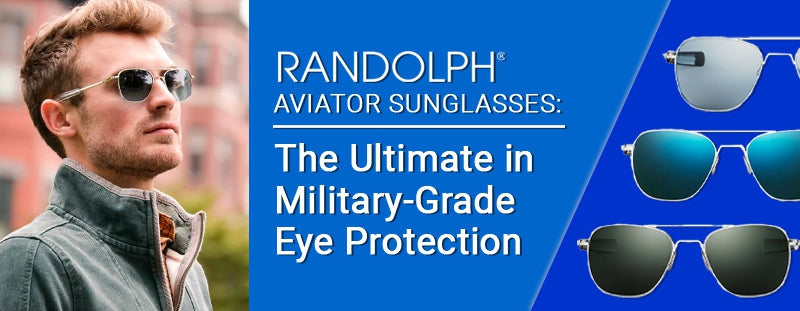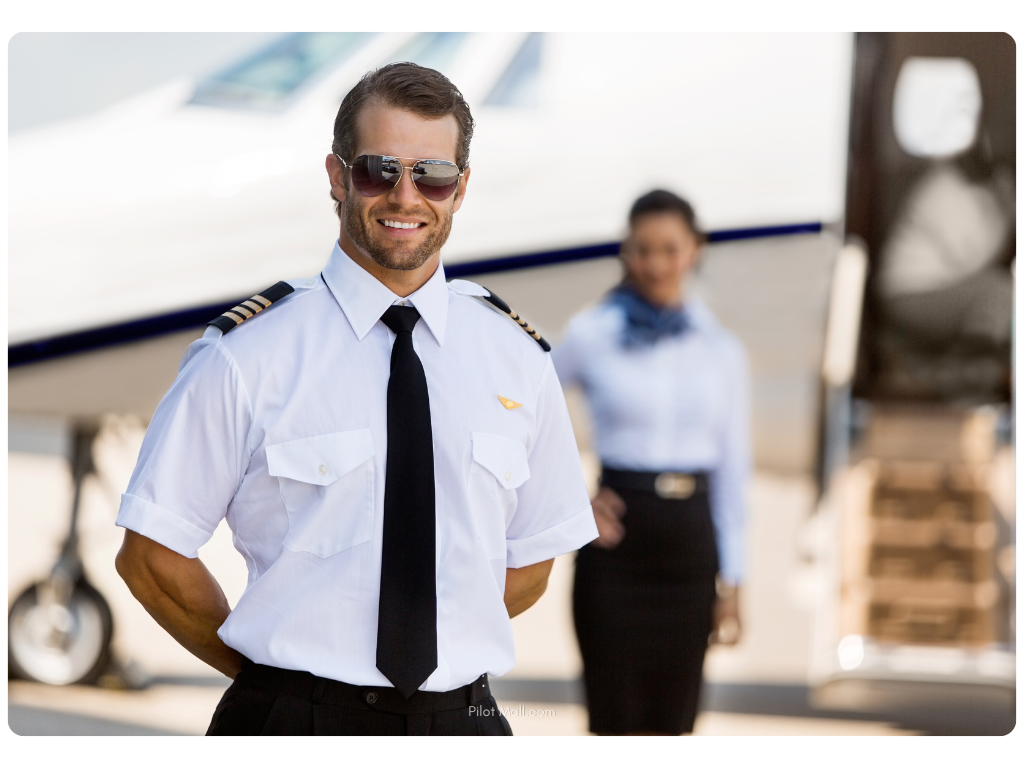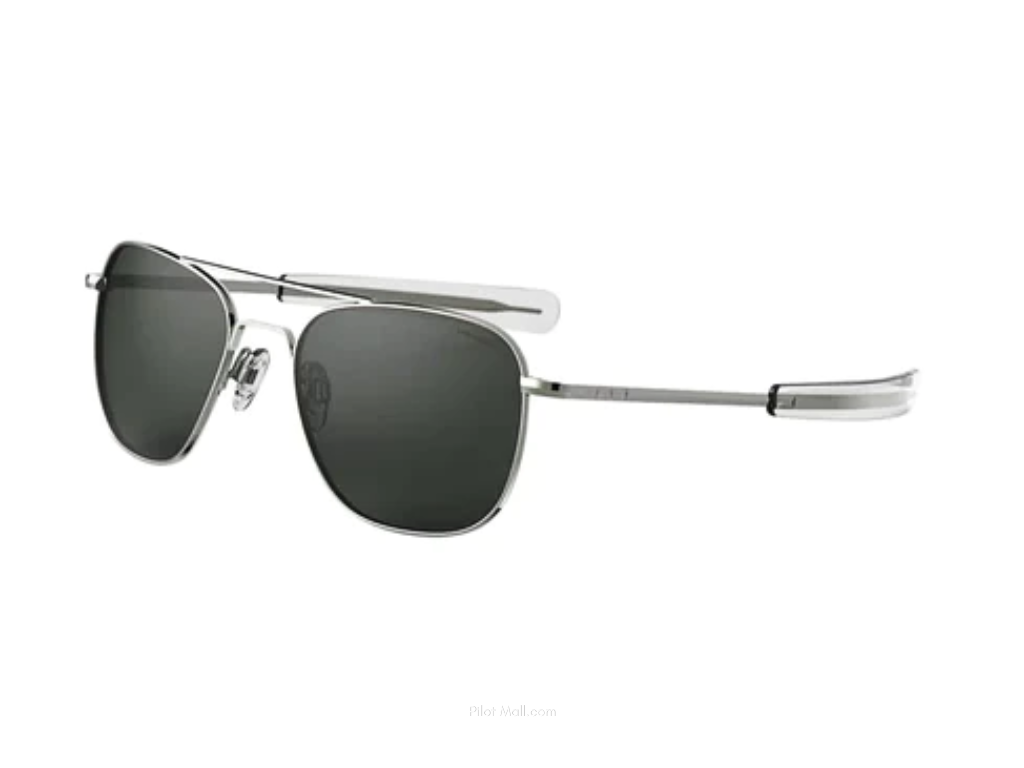Randolph Aviator Sunglasses: The Ultimate in Military-Grade Eye Protection

Quick—how many sunglasses styles can you name? If you only came up with two, we bet they’re the cat eye and the aviator. We have nothing against the feline-inspired frames of the 60s, but we’re all pilots here.
When it’s time to pick out a new pair of flying shades, the clear answer is a high-quality pair of aviators.

What are Aviator Sunglasses?
We know them when we see them, but what exactly are the defining traits of the iconic aviator sunglasses?
-
Lenses that are 2-3 times the size of the eye socket
-
Frames that strike the right balance – not too thick
-
A distinctive triple or double bridge
-
Large convex lenses that completely shield the eyes
-
Adjustable nose pads for personalized comfort
-
A teardrop shape that gracefully follows the curve of the cheekbone
History of Aviator Sunglasses
The aviator's journey began in the 1930s during the early days of military flight. Crafted by American Optical in 1935 and initially designated as the "D-1 flying goggle," these shades aimed to reduce visual distractions caused by the intense brightness of the sky.
The teardrop shape, now synonymous with aviators, was later specified by the U.S. government to facilitate pilots' view of their instrument panels.
Aviator sunglasses truly soared to new heights of popularity thanks to U.S. General Douglas MacArthur, whose commanding presence in them became an iconic image in 1944.
By the 1950s, aviators had become a cultural phenomenon, briefly overshadowed by the cat-eye trend of the '60s but making a strong comeback in the '70s and '80s. The movie "Top Gun" in 1986 further solidified their legendary status.
But how did aviators get their name? Originally dubbed "flying sunglasses," it wasn't until World War II, when the public saw pilots wearing these distinctive glasses, that the name "aviators" stuck.
Now, the burning question: do aviators suit your face shape? Unlike many other styles, aviators are remarkably versatile. Whether you have a square, round, oval, or heart-shaped face, aviators can complement your features, thanks to their unique design.
Enter Randolph Sunglasses – a brand that has been at the forefront of aviator excellence since its founding in 1972 by a Polish Royal Air Force veteran.
Winning the contract to produce standard military-spec sunglasses for the U.S. Air Force just ten years later, Randolph has continued to grow and now supplies sunglasses to all branches of the U.S. military.

Features of Randolph Sunglasses
Why have the military and NASA been trusting Randolph to protect the eyes of their military personnel and astronauts for so long?
Clearly, there is some “secret sauce” in the Randolph design.
1. Lens Tints
When you pick a pair of Randolph’s, you have multiple lens color choices (or you can just do like Tom Cruise and avoid the decision-making by stocking up on one of each).
All Randolph’s lenses are non-polarized.
- American Grey—Randolph’s signature neutral gray tint glass lenses with true color and contrast in all light and terrain conditions (worn by US Military pilots and NASA astronauts)
- AGX—green tint that relaxes the eyes to reduce eye fatigue and improve visual performance
- Tan—high contrast for low light and overcast days
2. SkyTec Technology
Your premium military-quality lenses include Vector ™ anti-reflective and Blue Wave ™ lens technology to protect your eyes from glare and blue light without compromising vision. They are naturally scratch-resistant and block 100% of UVA/B even at altitude, making them a must for all military pilots.
3. Bayonet Temples
This style of temple is designed to fit comfortably under headgear—no more pressure headaches like you used to get with skull temples.
The bayonet design rests gently against your head and its straight design means you can take your shades on and off without removing your headset.
4. Quality
Designed and handcrafted in the USA, Randolph frames are produced by the only remaining metal frame eyewear manufacturer in the United States.
Each pair of aviator sunglasses is built to exacting U.S military pilots specifications designed to ensure they can withstand the rigors of war and space travel.
Randolph is so confident in their quality that they guarantee your Randolph aviators for life.
5. Celebrity Sightings
When you head out in your new shades, you will be in good company. Multiple A-list celebrities wear Randolph aviators.
Obviously, it’s no surprise that Maverick himself—Tom Cruise—is a big fan of these legendary aviators, but he’s not alone. Other Hollywood legends like Robert Redford and Johnny Depp have also been seen sporting Randolphs.
Randolph’s movie and TV show credits include appearances in American Assassin, American Made, American Sniper, 13 Hours, Baywatch, CSI Las Vegas, Oblivion, The Mummy, Mad Men, and more.
-
What sunglasses do military pilots wear?
US Military pilots make UV protection a top priority, opting for 100% UV protection. Their sunglasses must also be impact-resistant, and anti-reflective with non-polarized glass lenses.
-
What brand of aviator sunglasses does the military use?
Randolph Engineering, Ray-Ban and Oakley are popular brands for military pilot sunglasses.
-
What sunglasses do the USAF use?
Typically, military pilots wear aviator sunglasses, but they must meet military-grade standards. Additional, the Federal Aviation Administration (FAA) now recommends a gray lens color pair of sunglasses to be worn.
Pick Your Randolph
Okay, the time has come. Now that you’re a subject matter expert on aviators, it’s time to pick out your new favorite shades. Check out our current collection of Randolph Engineering sunglasses. Also make sure to read the FAA's safety brochure on sunglasses for pilots.
Tip: Remember to use a ruler and Randolph’s frame sizing guide to choose the best size sunglasses for your face.
More Sunglass-Related Reads
- Changing Times – Why polarized frames now work in the cockpit
- Best Sunglasses for Pilots – Protect Your Vision with Style
- The Best Sunglasses for Pilots
Did you find this article helpful?
What are your go-to shades both in the cockpit and on the street? If you own or have tried on a pair of Randolph aviators, what did you think of them? Do you prefer polarized or non-polarized sunglasses?
























